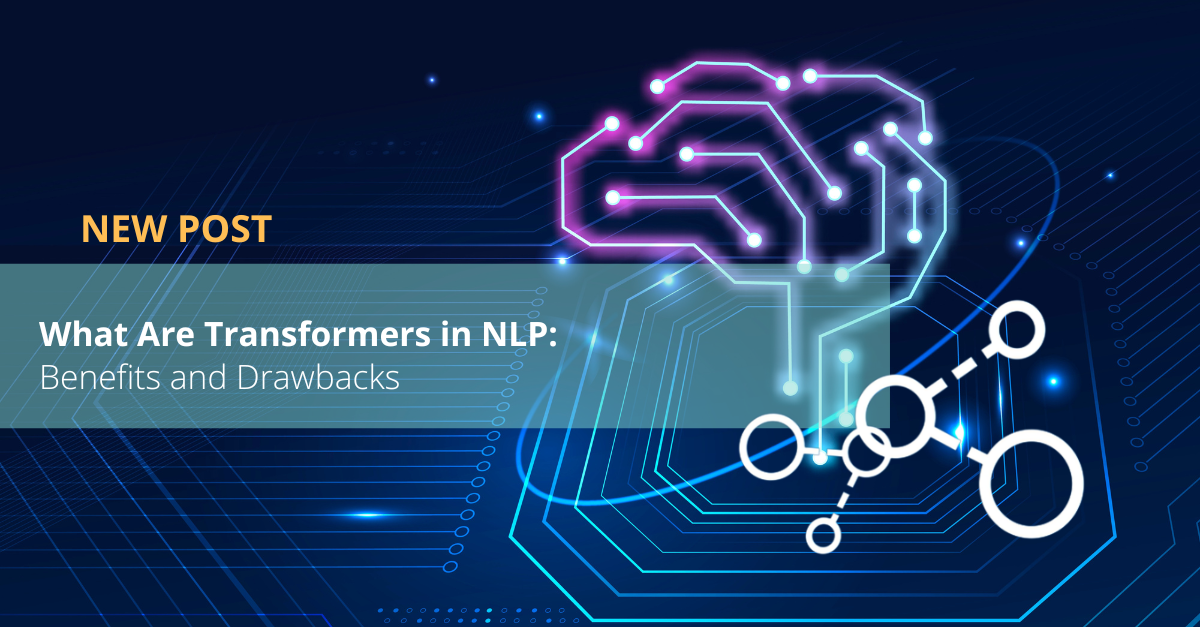
A Transformer is a type of deep learning architecture that uses an attention mechanism to process text sequences. Unlike traditional models based on recurrent neural networks, Transformers do not rely on sequential connections and are able to capture long-term relationships in a text.
The way a Transformer works is based on two key components: attention and transformer blocks. Attention allows the model to assign different weights to words within a sequence and to focus its attention on the most relevant parts of the text. Transformation blocks are layers that apply nonlinear transformations to the input representations and help the model learn language patterns and structures.
The benefits and drawbacks of Transformers in NLP
Large language models have revolutionized the field of natural language processing (NLP) by providing an unprecedented ability to understand and generate text in a coherent way. Among these models, Transformers stand out, having proven to be highly effective in various NLP tasks. This article explores what Transformers in NLP are and how they work, as well as their advantages and disadvantages.
The benefits of NLP Transformers
Transformers in NLP present several significant advantages over other language modeling approaches. Firstly, they are highly parallelizable, meaning that they can process multiple parts of a sequence at the same time, which significantly speeds up training and inference.
In addition, Transformers are able to capture long-term dependencies in text, which allows them to better understand the overall context and generate more coherent text. They are also more flexible and scalable, making it easier to adapt them to different tasks and domains.
Recommended:
The drawbacks of NLP Transformers
Although Transformers have many advantages, they also have some limitations. One of the main drawbacks is the high computational demand. Due to their size and complexity, models based on Transformers require large amounts of computational resources and training time.
In addition, Transformers are very sensitive to the quality and quantity of the training data. If the training data is limited or biased, model performance may be adversely affected. This can be a challenge in situations where data is scarce or difficult to obtain.
Uses and applications of a Transformer for language modeling
Transformers have been used in a wide range of natural language processing applications. Examples include machine translation, text generation, question answering, automatic summarization, text classification, and sentiment analysis.
A prominent example of Transformers in NLP is GPT-4 (Generative Pre-trained Transformer 4), developed by OpenAI and which currently reigns the large language model scene, according to various human and automatic evaluations. GPT-4, and its predecessor GPT-3.5 (better known as chatGPT), took the world by storm with their ability to generate consistent and compelling text in different contexts.
These models have been applied for tasks such as automatic text generation, where they excel in the generation of articles, essays, and even programming code. They have also been used for virtual assistants, chatbots, and personalized recommendation systems. However, it should be noted that human intervention and review are of the utmost importance since the models have a certain tendency to "hallucinate," i.e., invent facts or content.
Another relevant example is Bard, a conversational generative artificial intelligence chatbot developed by Google, based initially on the LaMDA family of large language models and later on PaLM, which for now supports only three languages: English, Japanese, and Korean. However, due to the General Data Protection Regulation (GDPR), this model is not yet accessible from some European Union countries, one of them being Spain. However, Google is working to ensure that Bard complies with the requirements established to be used on Spanish territory.
In addition to GPT-4 and Bard, there are numerous other transformer-based large language models specialized in different tasks and domains, and which are more accessible. Notable examples include LLaMa models, which have improved quality and accuracy in applications such as machine translation, summarization, and information extraction.
As mentioned above, these NLP Transformer models are trained on large amounts of data and require significant computational resources for implementation and execution. However, their performance and versatility have led to impressive advances in the field of natural language processing.
In summary, Transformers have revolutionized language modeling by enabling deeper understanding and generating consistent text in a variety of applications. Their ability to capture long-term dependencies, their flexibility and their ability to adapt to different tasks make them powerful tools in natural language processing. As research and development continues to advance, these Transformer-based models are expected to continue to play a key role in the future of the NLP.
Interesting content:
How to boost your business with natural language processing (NLP)
Pangeanic's natural language processing (NLP) solutions
At Pangeanic, we offer the latest advances in the field of NLP to provide the best service to our clients. We have developed solutions such as Masker, our data masking tool that helps our clients comply with privacy regulations, and PangeaMT, with which we provide customized machine translation services.
In addition, our R&D team is continuously carrying out research in the field of NLP in order to provide our clients with innovative and up-to-date products.




